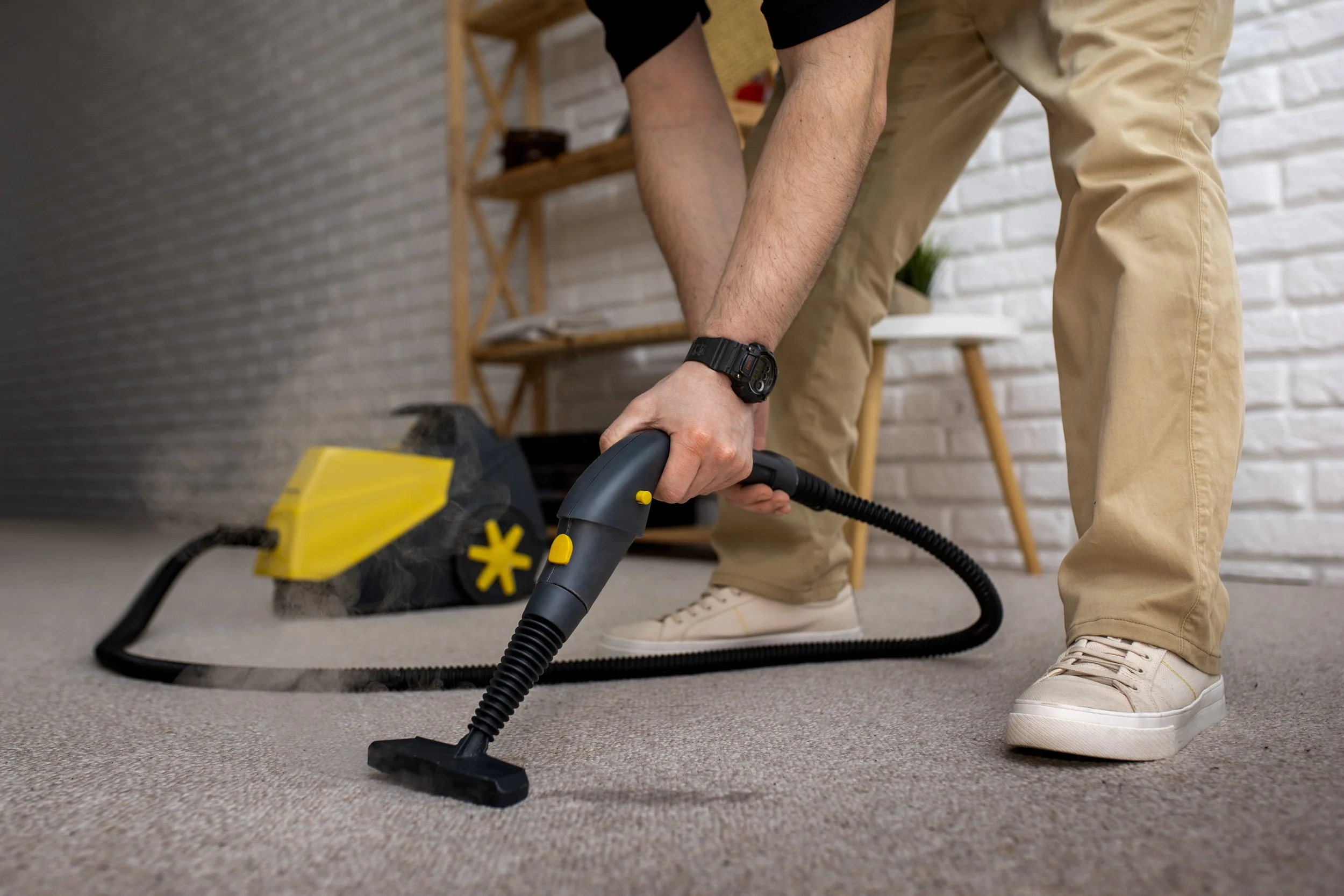How to Effectively Remove Mould from Carpet: A Professional Guide
Mould growth on carpets is a serious issue that can cause unpleasant odours, damage to flooring, and even health concerns, particularly in high-traffic environments like schools and offices. If left untreated, mould can spread quickly, affecting indoor air quality and leading to respiratory issues. Here’s a step-by-step guide to effectively removing mould from carpets and preventing future growth.
Why Does Mould Grow on Carpets?
Mould thrives in damp and humid environments, often developing due to water spills, leaks, or excessive moisture in the air. Common places where mould forms include office spaces with poor ventilation and school facilities exposed to frequent spills and foot traffic.
Essential Tools for Mould Removal
Before you begin, gather the following items:
Protective gloves and mask (to avoid inhaling spores)
A stiff brush
A vacuum cleaner with a HEPA filter
White vinegar or baking soda
Hydrogen peroxide or an anti-mould cleaner
A dry towel and a fan or dehumidifier
Step-by-Step Process for Removing Mould from Carpet
1. Assess the Damage
Before cleaning, inspect the affected area. If the mould has penetrated deep into the carpet fibres or reached the underlay, professional cleaning may be required, particularly in commercial settings such as schools or offices where hygiene is a priority.
2. Ventilate the Area
Open windows and doors to allow fresh air to circulate. If working in an office or school facility, ensure that employees or students are not present during the cleaning process to prevent exposure to airborne spores.
3. Vacuum the Carpet
Use a HEPA-filter vacuum to remove loose mould spores. This prevents spores from spreading to other areas of the room.
4. Scrub the Affected Area
Using a stiff brush, gently scrub the mouldy area to loosen the spores. Avoid using excessive force, as this can push mould deeper into the carpet fibres.
5. Apply a Mould Removal Solution
Choose one of the following solutions:
White Vinegar: Spray undiluted white vinegar onto the affected area and let it sit for an hour before scrubbing.
Baking Soda & Water: Create a paste and apply it to the mouldy area, letting it dry before vacuuming.
Hydrogen Peroxide (3% solution): Spray on the mould, let it sit for 10 minutes, and blot with a dry cloth.
6. Dry the Carpet Thoroughly
Damp carpets encourage further mould growth. Use a fan, dehumidifier, or heater to completely dry the carpet. If mould was present due to high humidity in office spaces or school environments, regular maintenance and moisture control are essential to prevent recurrence.
Preventing Mould Growth in Carpets
To keep carpets mould-free, follow these maintenance tips:
Control humidity levels with proper ventilation and dehumidifiers.
Regularly clean and vacuum carpets, particularly in schools and offices with heavy foot traffic.
Address spills and leaks immediately to prevent moisture buildup.
Schedule professional carpet cleaning services for high-use areas like school cleaning and office cleaning.
Professional Cleaning Services for Mould Prevention
For long-term mould prevention and carpet maintenance, professional cleaning services are highly recommended. At Sinco Services, we specialise in office and school cleaning, ensuring that learning and working environments remain clean, safe, and hygienic.



